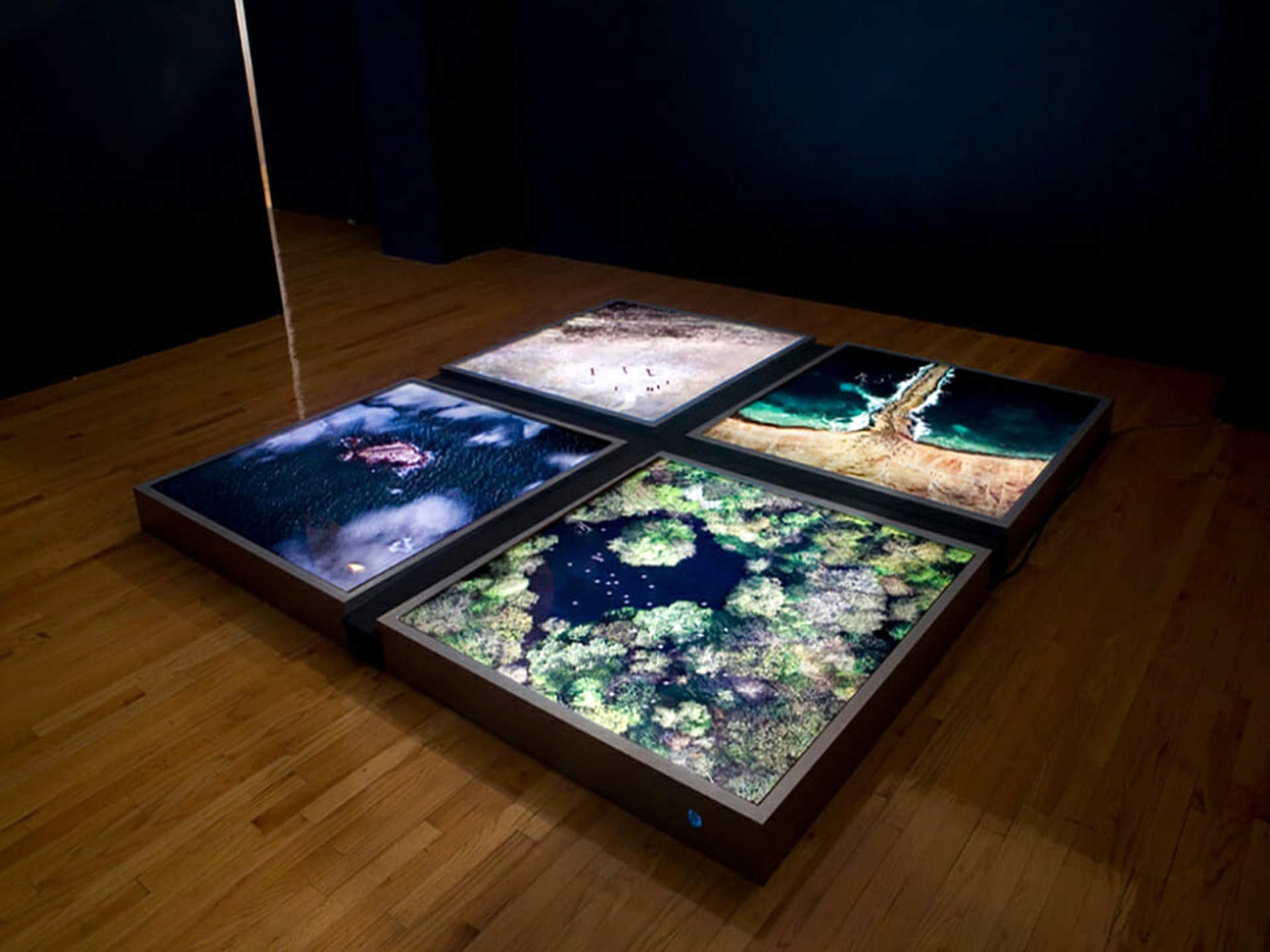
God’s Eye View , by art/Design Collective The Glue Society, takes the aesthetic of Google Earth and combines it with the Biblical, depicting four of the most important stories as they would most likely be seen today, photographed by satellite.
The images are presented as four floor-mounted lightboxes of approximately one metre square, the effect being that the audience literally takes the overhead view of the events in question. The concept is simple but has resonance by setting an important modern technological development firmly in time by juxtaposing it with a historical human creation that has also enjoyed significant social impact. The combination is a potent mixture of ancient and modern iconography.
It could be argued that the piece exists within a rich heritage of fine art that attempts to explore with Christianity, from Renaissance painting to the contemporary shock art of Andres Serrano’s ‘Piss Christ’. For me God’s Eye View is successful because it brings a savvy that could only have come from creators schooled in the rhetoric and working practices of the advertising industry, exemplified by high production values, contemporary cultural knowledge, and even the employment of the time-honoured advertising practice of multiple repetition. It could be argued that the piece is too simplistic and does not take much interpretation but that is perhaps the point and this is reflected in the extent to which the piece captured the public’s imagination.
The work quickly found an audience outside of its original context when it was covered by the design industry press. It immediately became a blogging sensation and was broadcast around the World. If, as with advertising, the success of a work is calculated by coverage then the piece definitely succeeded. Handled wrongly the piece could have easily been forgettable as the appropriation of religious imagery can become more the stuff of 6th Form art degree shows and Camden Market stalls rather than serious art propositions. But as it stands the viewer wishes there were more than four pieces in the installation.
For me, God’s Eye View is successful
because it brings a savvy that could only have come from creators schooled in the rhetoric and working practices of the advertising industry
God’s Eye View demonstrates that the transmogrification of a media artifact to a celebrated artwork can work in reverse. It also serves as evidence that commercial media practitioners are producing work intended to be perceived outside of a commercial context. The beguilingly named Glue Society is a creative agency from Australia now with a splinter cell in New York. Glue operate primarily as a creative agency providing advertising concepts for a number of blue-chip clients, Virgin Mobile and Nike are amongst their roster and they are successful enough in their endeavours for these clients that they are winners of a much-coveted D&AD pencil.
In taking a view at their website it becomes apparent thatGod’s Eye View shares the aloof, detached strand that appears to run across all their work and also has the high gloss finish of the high street or the entertainment multiplex, yet it’s authorship seems to owe more to the Romantic ideal of authentic artistic intention. The work is at the heart of their operation but their innovation continues to the set up of the company.
Glue function as an independent creative collective based in Sydney and New York. The seven-member collective was established in 1998 by graphic designers Jonathan Kneebone and Gary Freedman who, having grown tired of working for other people, decided to open their own agency. Glue now features writers, artists, designers and film directors who work as a studio where ideas and execution are brought into a single creative space to actively try to balance art and commerce. Glue prefer to not work to contract, preferring the freedom of working on a project to project basis more akin to freelancing. That said they do not define themselves as a freelance agency as the two creative directors are directly involved in the work alongside their external help. Project management is handled by a sister agency for which they function as in-house designers.
Kneebone once suggested that the world has changed such “that the commercially driven thing can be more artistic.” (Creative Review, 2008) Today, quite often, it can seem that the opposing view is generally preferred, to the point that our cultural environment can seem to be governed by formula to satisfy the perceived needs of the market and thus guarantee sales and revenue.
It always seemed refreshing that Kneebone could take such an opposing view back then and in the times passed they happily still seem to be able to operate on that maxim.
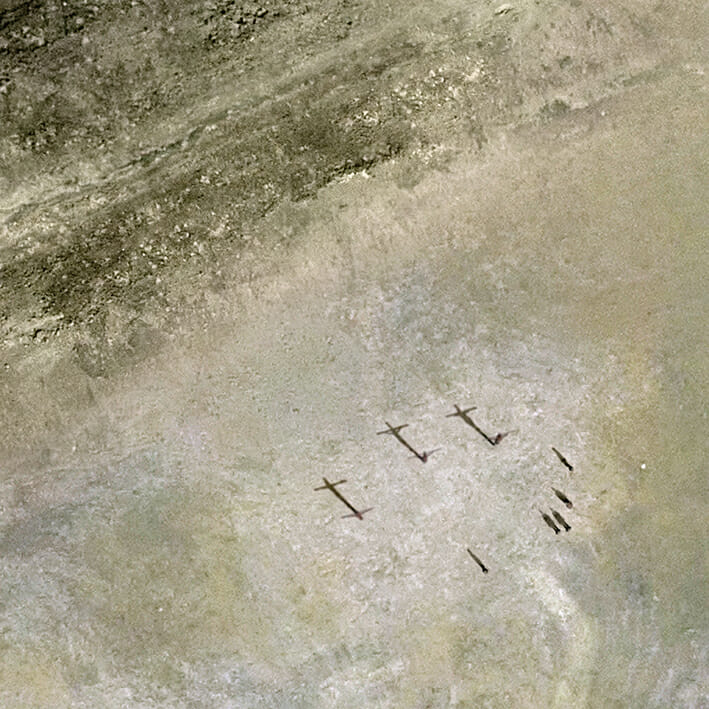
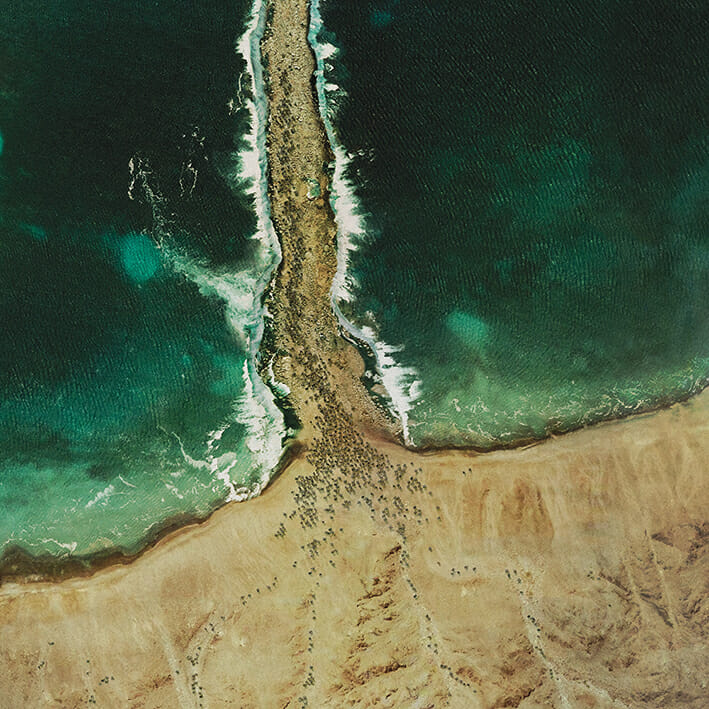
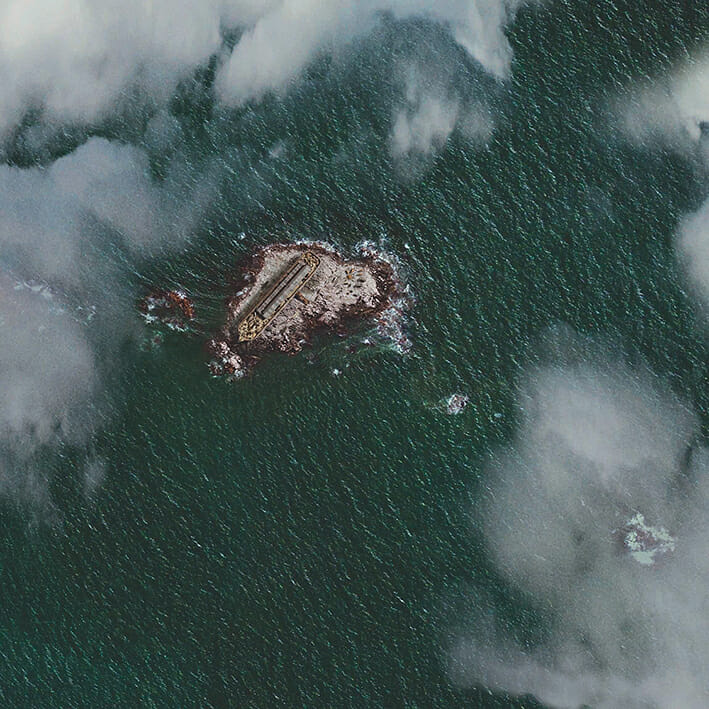
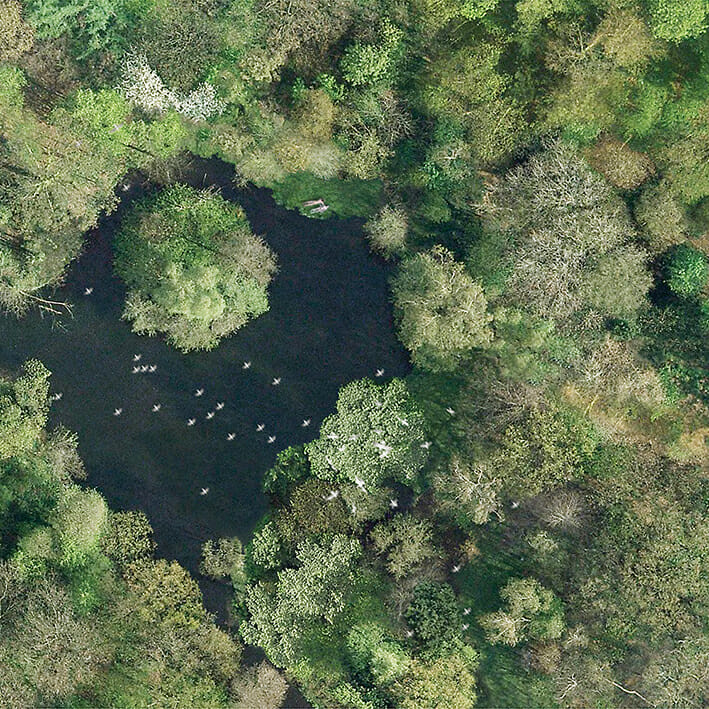
I was asked if it could be published in a bible, so I’m taking that as a positive sign
James dive
And now, a special Easter Egg, a brief but exclusive conversation with James Dive, Creator of God’s Eye View…
Where did the inspiration for the work come from?
I was inspired by the scientific nature of satellite photography, and the trust that this photography is given because it is scientific. I wanted to challenge or mess with that trust. The translation of something as subjective and loaded as biblical events into this scientific medium seemed to me the perfect vehicle to explore this contrast.
What was the intent behind it, satire or celebration?
My intent was to let the audience derive their own meaning from it. Believers often saw it as a celebration, whereas non-believers were generally challenged, and often disorientated, by what they saw as fictional events being presented in a non-fiction format.
How was the work constructed?
The technical process was an amalgamation of a lot of different techniques. Each image started as a Frankenstein of satellite imagery, for instance, the Moses piece is the combination of Niagara Falls, the Red Sea, and an African desert. Each work was then given specific figures, shadows, and objects which were then worked into the image, all of which were worked up digitally from 3D models.
What I like about it is that it maintains the awe of the Old Testament. In terms of presenting a modernised image of religious stories, it seems like it might have been quite positive PR for the Church. Was there ever any feedback, good or bad, from religious bodies?
I was asked if it could be published in a bible, so I’m taking that as a positive sign.
The piece was phenomenally successful at making a name for itself across the Internet, what has been its legacy for you as a studio?
The response to the work was incredible. Being quoted as the highlight of Miami Basel was definitely quite a moment for me as an artist. And, as you mention, it took on its own life online. As a collective, the exposure was invaluable in terms of people learning about the wide diversity of our work and the prolific nature of the studio.
This is a fan review about why I find God’s Eye View by the creative agency/arts collective The Glue Society such an original, refreshing, and inspiring piece of work some 20 years after it was created.
Quite often modern art has a time and place and then its influence seems to fade. When I first saw the project in Creative Review it got right under my skin. Happily, every time I revisit this work I find that it still speaks to me.
And, many thanks to James Dive, the creative mastermind of the project, for the exclusive mini-interview.
– –

